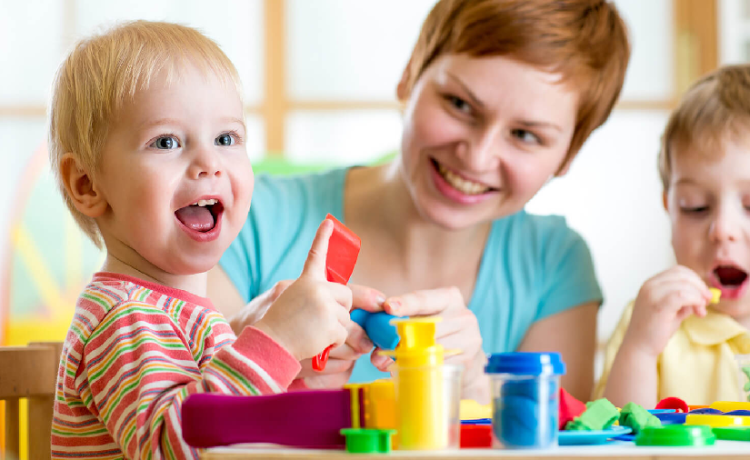The fact that children love to play instruments is probably a good enough reason to include them in a childcare programme, even if it didn’t also have many other positive effects on children’s development. Brittany works in the Mascot area where her son Mason attends a Mascotchildcare centre. Mason’s favourite activity is music and movement and Brittany believes the use of rhythm and beats has helped his counting and numeracy.
Teaching skills
Motor skills enable us to perform movements and tasks, both large (gross) and small (fine). When children use and play instruments, both fine and gross motor skills can be developed. Playing drums or tambourines can develop both gross motor skills and a sense of timing, while playing a xylophone or triangle involves fine motor skills. The act of playing instruments also helps with eye-hand coordination.
Cause and effect
Playing an instrument teaches very young children cause and effect – when they perform an action, they make a sound. With keyboard instruments, different keys make different sounds. Each instrument requires different actions to make noise, and different actions change the sounds it makes.
Creativity
Having musical instruments as part of the childcare programme is a wonderful way to release each child’s creativity. Sensory pathways are developed each time the children pick up an instrument and play. Every child will find a sense of achievement as they bang a drum or ring a bell and more so when they find they can follow simple rhythms and beats.
Maths and music
Music and maths are intrinsically linked and use the same part of the brain. All music is based on maths: time signatures, beats and progressions which is why performing music reinforces mathematical concepts in young children. Studies have revealed that children who play musical instruments have better complex mathematical skills than those who don’t.
Brings children together
Sharing music time is a great opportunity for children to act co-operatively and as group to create something. Giving children turns on each instrument teaches taking turns and sharing, and builds understanding that every person is valuable. When dancing and singing are included in music time, children can form strong bonds built by music.
Cultural instruments
Introducing instruments from a range of countries and cultures is a great way to teach children about differences and diversity. Having parents come in to talk about the instruments can help children learn about other people’s art and entertainment culture.
Musical expression
Masons’ Mascot childcare centre has a wide range of percussion instruments such as drums, bongos, bells, woodblocks, shakers and tambourines. They also have xylophones with two beaters for each instrument. These are the most common type of instruments found in childcare centres to encourage musical expression.
Instruments bring children together, let them be creative and teach them a range of skills, which is why childcare centres incorporate music into their programmes, along with movement and singing. Centres often bring in music specialists who will perform and teach children new skills on their instruments.













